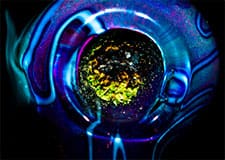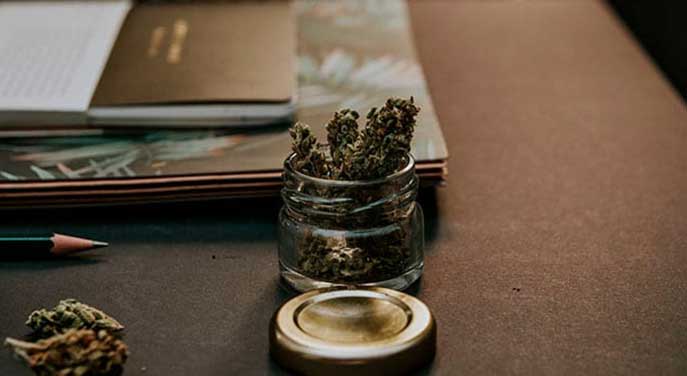 One of cannabis’s most attractive traits as a drug is its naturalness. Unlike other narcotics, which require excessive processing to isolate and concentrate the psychoactive components, cannabis gains its psychoactive properties naturally, as a consequence of maturing into a flowering plant. As a result, using cannabis feels much safer than using other drugs because many people think something from nature cannot be devastating to one’s health.
One of cannabis’s most attractive traits as a drug is its naturalness. Unlike other narcotics, which require excessive processing to isolate and concentrate the psychoactive components, cannabis gains its psychoactive properties naturally, as a consequence of maturing into a flowering plant. As a result, using cannabis feels much safer than using other drugs because many people think something from nature cannot be devastating to one’s health.
However, it is important to note that users do need to alter cannabis slightly to ensure that it has the properties desired. In a process called decarboxylation, users must fundamentally change the compounds within cannabis to activate them and allow them to absorb into the human body. Decarboxylation seems like a dangerous, risky procedure — but that couldn’t be farther from the truth. Read on to learn more about decarbing cannabis, to include why it’s necessary and how to do it at home.
Cannabinoids in Raw Cannabis
Raw cannabis, even the buds covered in frosty trichomes, won’t get anyone high. Though health nuts advocate for chowing down on a raw cannabis salad, the truth is the compounds that make cannabis unique — THC, CBD and other cannabinoids — aren’t in a format that the human body can process.
Before decarboxylation, most cannabinoids are in their acid form, which is why users might find articles about THCa and CBDa, or tetrahydrocannabinolic acid and cannabidiolic acid. These compounds look almost like THC and CBD, except they have an extra oxoacid molecule attached to them. This extra bit doesn’t allow the cannabinoids to attach to same receptors in the human body that decarbed cannabinoids do, which means to most users eager for a marijuana high, they have no effect.
There isn’t much research on raw cannabinoids in acidic form, but the findings that do exist suggest that THCa and CBDa might have their own uses. In some animal models, THCa improved neuronal viability and decreased neurodegeneration, which could be a promising find in the fight against neurodegenerative diseases like Alzheimer’s, Parkinson’s and multiple sclerosis. Still, more research is warranted to better understand THCa’s role in neuroprotection.
Fortunately, the process of decarboxylation removes that pesky acid attachment and transforms cannabinoid acids into usable cannabinoids that the body can recognize and bind to.
Common Methods of Decarbing
Regardless of where a user gets their bud, whether it is a dealer in New York City or this list of medical dispensaries in Arkansas, and almost regardless of what kind of cannabis product is used, be it fresh flower, cured nugs or concentrates, all weed needs to be decarbed before it can be used. Decarboxylation is a function of time, temperature and atmosphere — but essentially, it means users need to heat up their weed before they can get high.
 Cannabis culture offers a few different methods for safe and easy decarbing:
Cannabis culture offers a few different methods for safe and easy decarbing:
Lighting on fire. The traditional methods of using weed — joints, blunts, pipes, bongs — all use this method. Users pack raw bud into rolling papers or bowls and light them on fire. This isn’t necessarily the most efficient method of decarbing, but it is convenient and gets the job done.
Heating in vape. Vaporizers don’t combust cannabis material but instead super-heat them, either by directly heating up metal in contact with the weed or by heating up air around the weed. More complex vapes provide greater control over temperature, which makes them more efficient at decarbing.
Cooking in oven. Most edible recipes recommend decarbing weed in the oven before trying to infuse it or cook it into food. The key here is to keep the temperature low and steady; high temps cause THC to degrade into CBN, which is less psychoactive and thus makes the bud less potent. Typically, users should watch the weed to ensure it doesn’t burn.
Boiling in water. Instructions for decarbing in the crockpot with a water bath or using a sous vide argue for this decarboxylation method because it ensures that cannabis won’t exceed 212 degrees Fahrenheit (100 degrees Celsius) because water cannot heat up beyond that temp. However, boiling can take much longer than users expect, making it more laborious and more likely to result in errors.
Decarbed cannabis is still natural cannabis. Humans have known the importance of decarbing for about 2,500 years, ever since the Ancient Chinese burned bud in their spiritual practices. Today, users have more options than ever for activating cannabinoids and getting a good, clean high.
This content is a joint venture between our publication and our partner. We do not endorse any product or service in the article.


